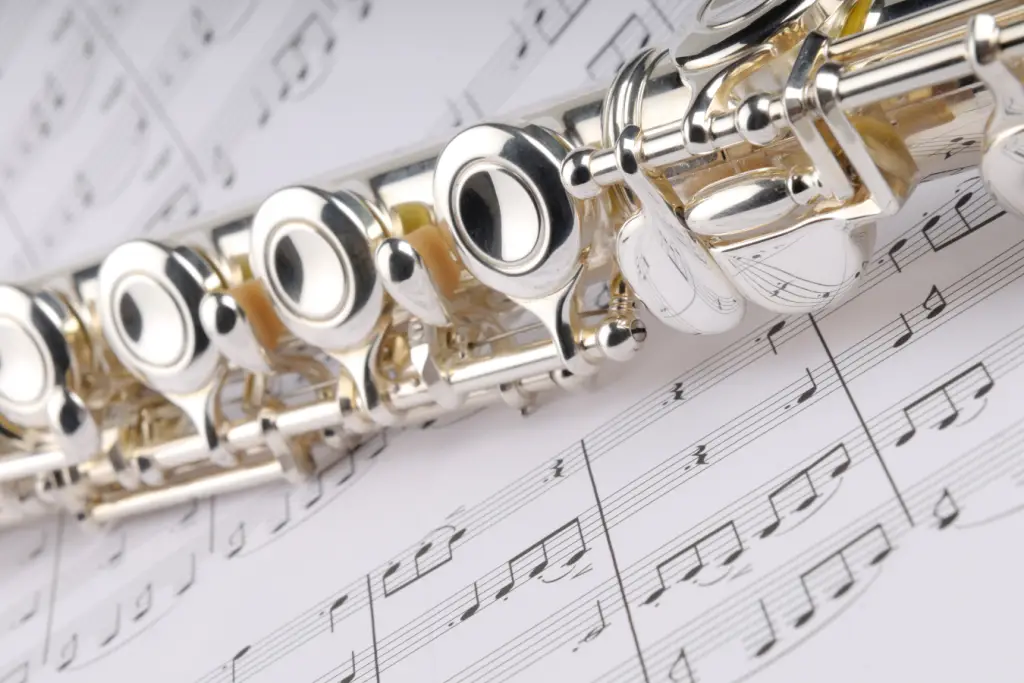Overblowing on the flute can be a frustrating challenge for many players. This common issue occurs when too much air is forced into the instrument, causing an unintended jump to a higher octave. To avoid overblowing, flutists should focus on controlling their air speed and volume while maintaining proper embouchure and breath support.
Mastering the balance between air pressure and lip position is key to producing a clear, consistent tone across all registers. Players can practice long tones and octave jumps to develop better control over their airstream. Experimenting with different lip shapes and air directions can also help refine technique.
Regular practice with a tuner and metronome allows flutists to develop muscle memory for proper air control. Slow, deliberate exercises gradually increase in speed and complexity as players gain confidence. With patience and persistence, flutists can overcome overblowing and achieve smoother, more expressive performances.
Understanding Flute Basics
Proper flute technique begins with understanding the instrument’s fundamental components. The flute consists of three main parts: the headjoint, body, and footjoint. Each section plays a crucial role in sound production.
The embouchure, or lip placement, is essential for creating a clear tone. Players form a small opening with their lips, directing air across the embouchure hole. This creates vibrations that produce sound.
Breath control is another key element. Flutists must learn to regulate their airflow, using diaphragmatic breathing for consistent tone quality. This technique involves expanding the abdomen rather than lifting the shoulders when inhaling.
Finger placement affects pitch and intonation. Correct hand position allows for smooth transitions between notes and helps maintain proper balance of the instrument.
Posture also impacts sound production. A straight back and relaxed shoulders enable better breath support and finger dexterity. Players should hold the flute at a slight downward angle for optimal air direction.
Key Flute Components:
- Headjoint
- Body
- Footjoint
- Keys
- Embouchure hole
Mastering these basics provides a solid foundation for avoiding overblowing and developing a beautiful flute tone.
Developing Good Embouchure
A proper embouchure forms the foundation for avoiding overblowing on the flute. The embouchure refers to the shape and position of the lips when playing.
To develop a good embouchure, start by placing the headjoint against the lower lip. The lip plate should rest just below the red part of the lip. Aim to cover about 1/3 of the embouchure hole with the lower lip.
Form a small, focused aperture with the lips. Think of saying “pooh” or gently blowing out a candle. Keep the corners of the mouth firm but relaxed.
Practice making a clear sound on just the headjoint. Experiment with lip position and air speed to find the sweet spot. Avoid pushing the lips forward or puckering excessively.
Once comfortable with the headjoint, apply the same embouchure to the full flute. Maintain consistent lip position and aperture size across all registers.
Regular practice in front of a mirror can help refine embouchure technique. Pay attention to lip shape, jaw position, and overall facial relaxation. Record yourself playing to analyze your embouchure visually and aurally.
Remember, developing a good embouchure takes time and patience. Consistent, focused practice will lead to improvements in tone quality and control.
Practice Techniques for Dynamics
Controlling dynamics on the flute requires focused practice. Players can start by isolating dynamics exercises from other aspects of playing. This allows full concentration on volume control.
Long tones provide an excellent foundation for dynamic practice. Begin with a comfortable middle register note and gradually increase volume from pianissimo to fortissimo. Then decrease back to pianissimo over 8-16 counts.
Crescendo and diminuendo exercises help develop smooth transitions between dynamic levels. Try playing scales or simple melodies with gradual volume changes. Focus on maintaining consistent tone quality throughout.
Another useful technique is to practice sudden dynamic changes. Alternate between forte and piano on each note of a scale or arpeggio. This builds control and responsiveness in the embouchure.
Metronome work can enhance dynamic precision. Set a slow tempo and assign different dynamics to each beat or measure. This improves timing and accuracy in dynamic changes.
Recording practice sessions allows flutists to critically assess their dynamic control. Listen for evenness in volume changes and clarity at all dynamic levels. Adjust technique based on these self-evaluations.
Lastly, incorporate dynamics into daily warm-up routines. This reinforces good habits and makes dynamic control a natural part of playing.
Troubleshooting Common Issues
Inconsistent air pressure often leads to overblowing. Players should focus on maintaining steady breath support throughout each note. Practicing long tones can help develop this control.
Embouchure tension can also cause overblowing. Relaxing the lips and corners of the mouth allows for better air control. Regular mirror practice helps flutists observe and adjust their embouchure.
Incorrect head joint alignment frequently results in overblowing. The embouchure hole should be properly centered with the lip plate. Small adjustments can make a significant difference in tone production.
Flute position matters too. Holding the instrument at the correct angle prevents unintended air leaks. A 30-45 degree downward angle typically works best for most players.
Some flutists overblow due to poor posture. Sitting or standing straight with relaxed shoulders promotes optimal breath support and control. Regular posture checks during practice sessions can help address this issue.
Faulty equipment can contribute to overblowing problems. Ensure the flute’s pads seal properly and the head joint cork is correctly positioned. Regular maintenance by a qualified technician keeps the instrument in optimal playing condition.

